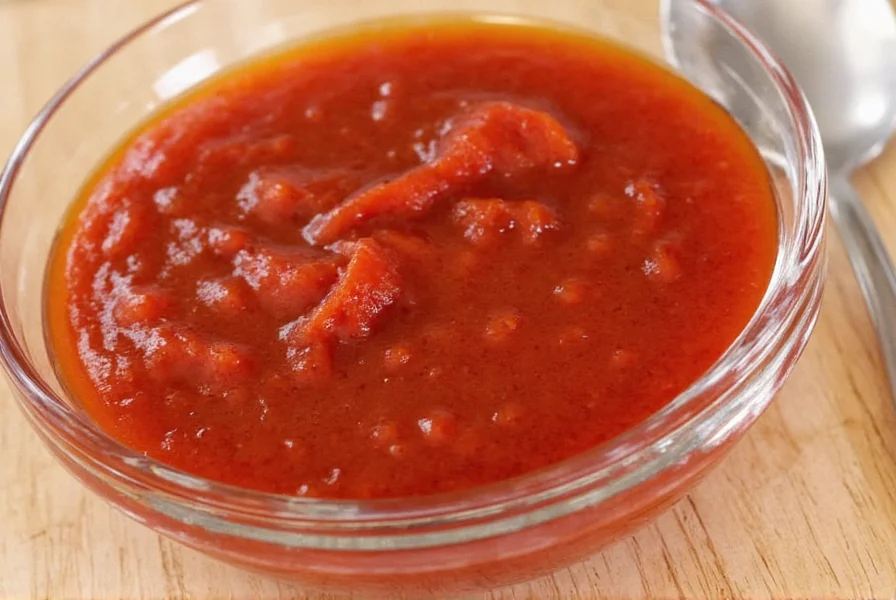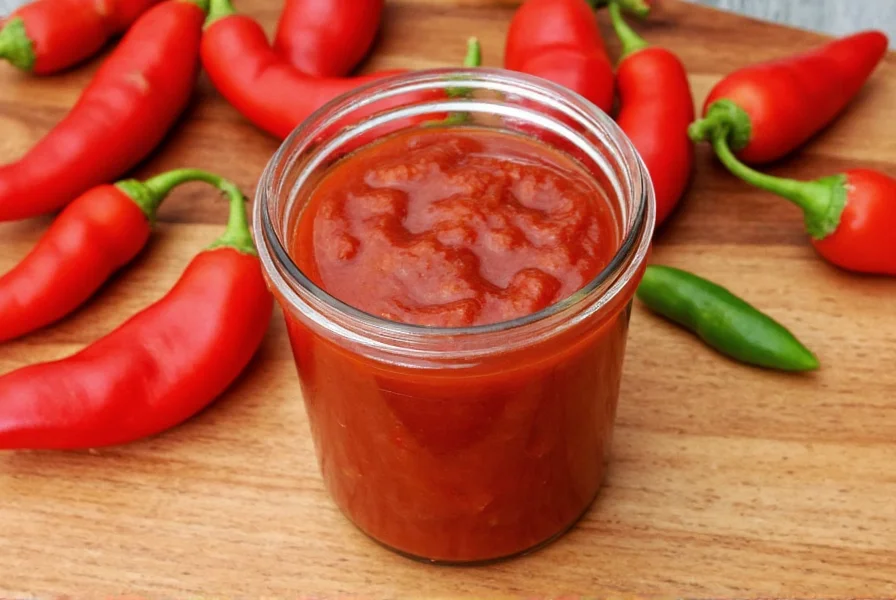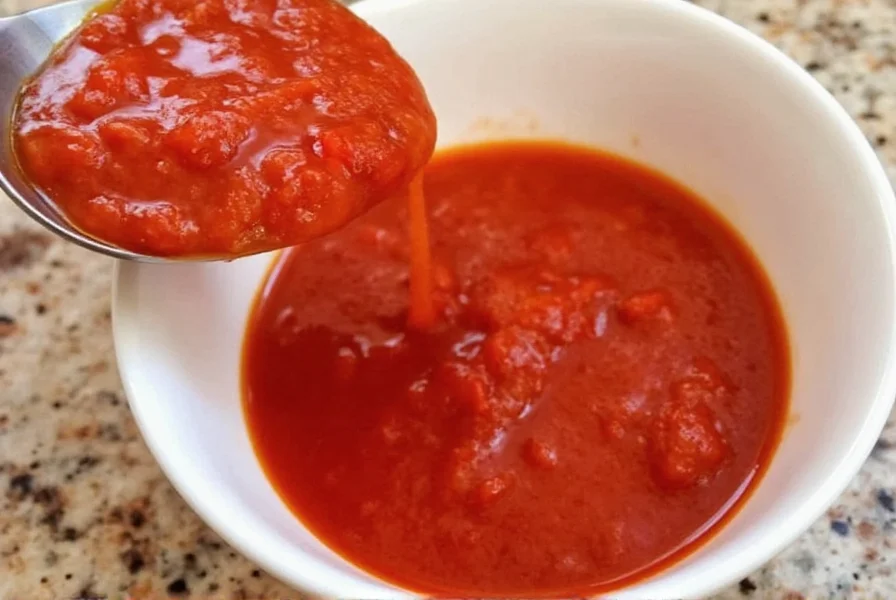Chamoy, that vibrant red condiment adored on street tacos, fresh fruit, and even candies, has become a global sensation. Understanding what's actually in this tangy sauce matters for dietary needs, flavor exploration, and culinary authenticity. Whether you're checking for allergens, considering homemade preparation, or simply curious about traditional chamoy recipe ingredients, knowing the components helps you make informed choices.
Breaking Down Chamoy's Essential Ingredients
At its heart, chamoy transforms dried fruit into a complex sauce through careful balancing of flavors. The traditional preparation starts with umeboshi (Japanese salted plums), but Mexican chamoy typically uses locally available fruits. Let's examine each component that contributes to what gives chamoy its distinctive flavor.
Dried Fruit Base
The foundation of authentic chamoy ingredients is dried fruit. Common options include:
- Apricots (most traditional in Mexican chamoy)
- Plums (closer to the original Japanese umeboshi)
- Mangoes (popular in modern variations)
- Prunes or other stone fruits
These fruits provide natural tartness and sweetness while creating the sauce's characteristic thick texture. The fruit undergoes a preservation process with salt before becoming chamoy, which explains why is chamoy vegan friendly—it contains no animal products in its traditional form.
Chili Peppers for Heat
No discussion of chamoy sauce ingredients list would be complete without addressing the heat component. Most commercial and homemade versions use:
- Arbol chilies (providing sharp, immediate heat)
- Guajillo chilies (adding deeper, smoky notes)
- Chipotle peppers (in some regional variations)
The chili content determines whether you're getting mild table sauce or the intense version popular on chamoy candies. When examining chamoy ingredients nutrition facts, remember that the capsaicin in chilies offers potential metabolic benefits.
Acidic Components
Vinegar serves as the crucial acidic element that preserves the sauce and enhances its shelf life. Most traditional chamoy recipe ingredients specify:
- White vinegar (most common in commercial products)
- Rice vinegar (in versions with Asian influence)
- Lime juice (in fresh, homemade preparations)
| Ingredient Category | Traditional Preparation | Commercial Production |
|---|---|---|
| Fruit Base | Dried apricots or plums | Fruit concentrates |
| Preservatives | Natural salt preservation | Sodium benzoate, potassium sorbate |
| Coloring | Natural fruit pigments | Red 40, Yellow 5 |
| Sweeteners | Raw sugar or piloncillo | High fructose corn syrup |
Commercial vs. Homemade Chamoy Ingredients
Understanding the difference between store-bought and homemade chamoy ingredients helps you choose based on your priorities. Commercial producers often modify traditional chamoy recipe ingredients for consistency, shelf stability, and mass production.
What Store-Bought Chamoy Contains
Check any chamoy sauce ingredients list on a commercial bottle and you'll typically find:
- Fruit puree or concentrate
- Vinegar
- Sugar or high fructose corn syrup
- Chili powder or extract
- Salt
- Preservatives (sodium benzoate, potassium sorbate)
- Artificial colors (Red 40, Yellow 5)
- Thickeners (xanthan gum)
These additives extend shelf life but may concern those monitoring chamoy ingredients nutrition values or seeking clean-label products.
Authentic Homemade Version
Traditional homemade chamoy ingredients remain remarkably simple:
- Dried fruit (soaked and rehydrated)
- Water
- Salt (for preservation)
- Chilies (to taste)
- Vinegar (added after fruit preservation)
- Sugar (optional, to balance tartness)
Without preservatives, homemade chamoy lasts about two weeks refrigerated. The absence of artificial colors means authentic versions often appear more orange than the vibrant red of commercial products.
Regional Variations in Chamoy Ingredients
The specific ingredients in chamoy vary significantly across regions, reflecting local tastes and available ingredients.
Mexican Chamoy
Mexican-style chamoy typically features:
- Apricots as the primary fruit
- Arbol chilies for pronounced heat
- Distinct sweet-sour balance
- Thicker consistency for dipping
Filipino Chamoy (Champoy)
Filipino variations often include:
- Mangoes as the fruit base
- Milder chili varieties
- Additional citrus elements
- Thinner consistency for drizzling
Dietary Considerations for Chamoy Ingredients
When evaluating chamoy sauce ingredients list for dietary needs, consider these factors:
Allergen Information
Traditional chamoy ingredients contain no common allergens, making it generally safe for:
- Gluten-free diets (naturally gluten-free)
- Vegan diets (check for sugar processing methods)
- Nut-free requirements
However, commercial versions may contain sulfites (from dried fruit) or be processed in facilities with allergens.
Nutritional Profile
Understanding chamoy ingredients nutrition facts helps moderate consumption:
- High in sugar (commercial versions)
- Low in fat
- Contains some fruit-derived vitamins
- Can be high in sodium
A tablespoon of commercial chamoy typically contains 20-30 calories, mostly from sugar.
What Makes Chamoy's Flavor Unique
The magic of chamoy comes from how its ingredients interact. The dried fruit provides concentrated sweetness and tartness, while vinegar adds sharp acidity. Chilies contribute heat that builds gradually, and salt enhances all other flavors through what gives chamoy its distinctive flavor synergy. This balance of sweet, sour, salty, and spicy creates the umami-rich experience that makes chamoy so addictive.

How to Choose Quality Chamoy
When selecting a product, examine the chamoy sauce ingredients list for these quality indicators:
- Fruit listed as first ingredient (not sugar or syrup)
- Natural preservatives over artificial ones
- Recognizable chili varieties rather than "spice blend"
- Avoidance of high fructose corn syrup
- Minimal artificial colors
Higher quality products often specify the fruit variety and chili types used in their ingredients in chamoy formulation.

Frequently Asked Questions
What are the main ingredients in traditional chamoy?
Traditional chamoy contains dried fruits (typically apricots or plums), chilies, vinegar, salt, and sugar. The fruit undergoes a preservation process with salt before being transformed into the sauce we recognize as chamoy.
Is chamoy vegan friendly?
Yes, traditional chamoy ingredients are naturally vegan as they contain only fruit, chilies, vinegar, and sweeteners. However, some commercial versions may use sugar processed with bone char, so checking the specific product is recommended for strict vegan diets.
Does chamoy contain common allergens?
Traditional chamoy ingredients contain no common allergens. It's naturally gluten-free, nut-free, and dairy-free. However, commercial versions may contain sulfites from dried fruit or be processed in facilities with allergens, so always check the specific product's label.
What gives chamoy its distinctive flavor profile?
Chamoy's unique flavor comes from the balance of sweet (from fruit and sugar), sour (from vinegar and fruit), salty (from preservation process), and spicy (from chilies) elements. This combination creates a complex umami-rich experience that's simultaneously refreshing and addictive.
How do homemade and store-bought chamoy ingredients differ?
Homemade chamoy uses simple ingredients like dried fruit, water, salt, chilies, and vinegar. Commercial versions often include preservatives (sodium benzoate), artificial colors (Red 40), and sweeteners like high fructose corn syrup for consistency and shelf stability.











 浙公网安备
33010002000092号
浙公网安备
33010002000092号 浙B2-20120091-4
浙B2-20120091-4